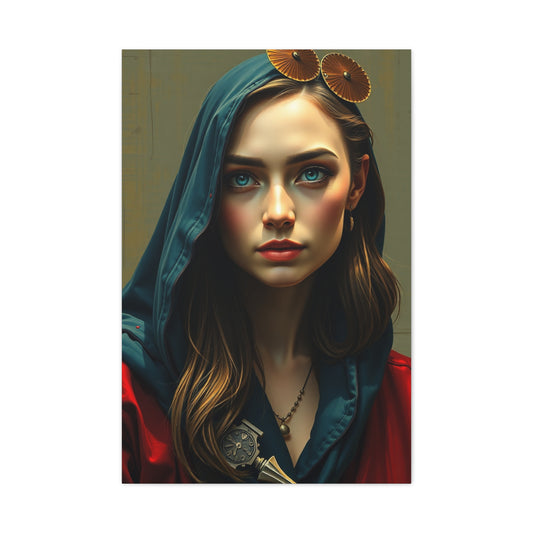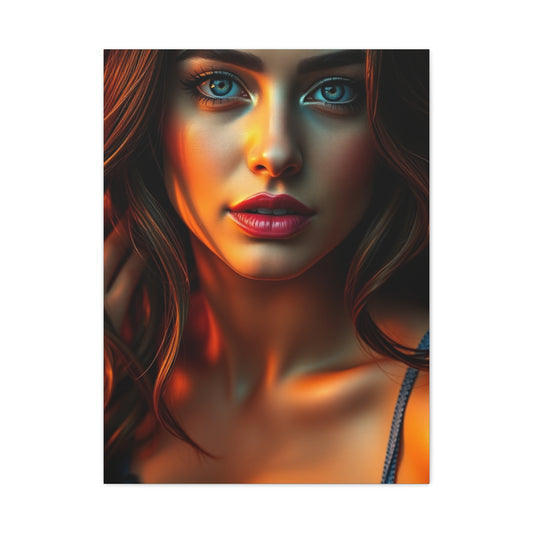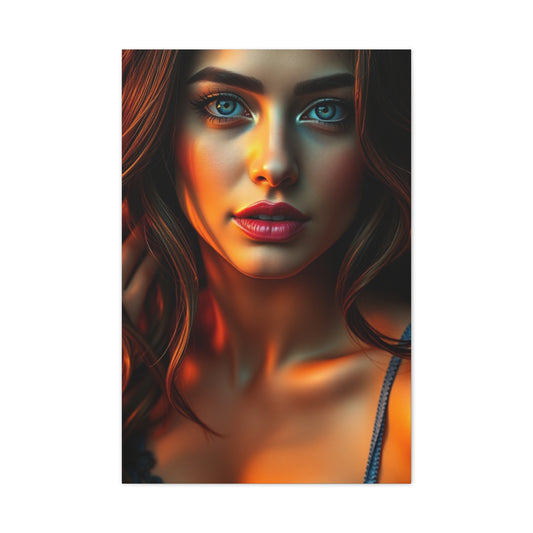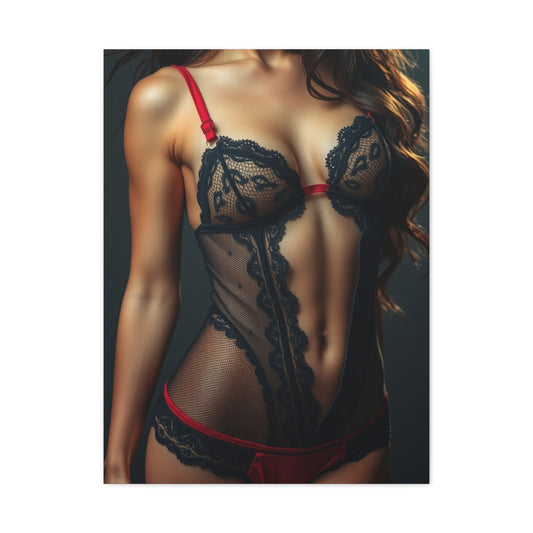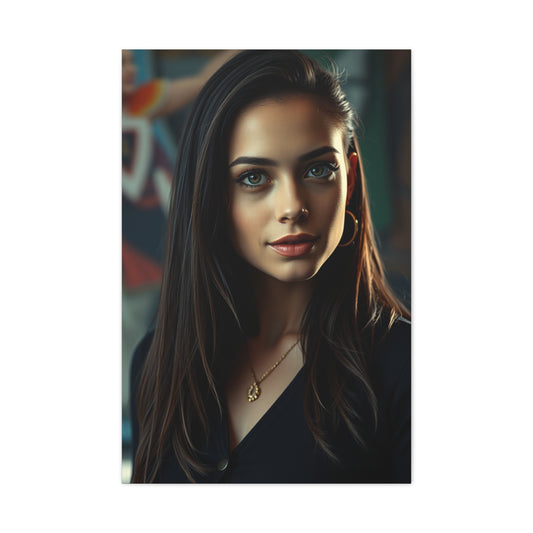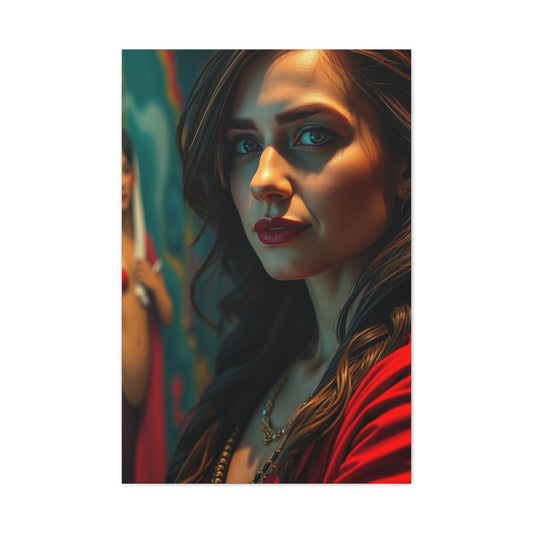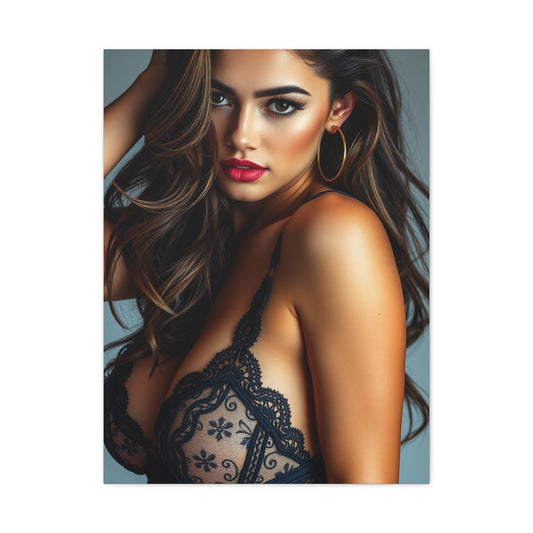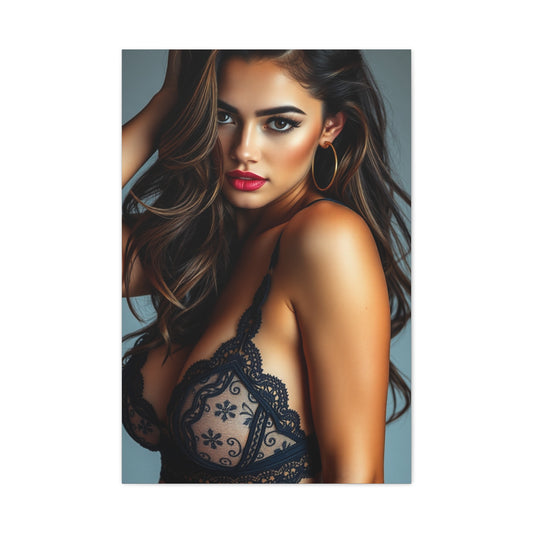In the realm of interior design, few formats possess the profound elegance and captivating presence of a triptych. A triptych, an artistic composition typically consisting of three distinct panels, holds a unique place in the world of visual art and design. While the origins of this format date back to the medieval and Renaissance periods, where it was predominantly used to portray sacred themes or complex narratives, its appeal has evolved, seamlessly blending with modern sensibilities. Today, the triptych format has become a cherished tool in contemporary home decor, a means of transforming a single image into an awe-inspiring visual journey that stretches across the wall, evoking sophistication and dynamism.
A Rich History and a Modern Twist
The triptych format traces its origins to early Christian art, often employed in altarpieces to tell biblical stories or depict religious figures. Each panel of the triptych was painted with meticulous detail, often hinged together so that the panels could be opened or closed to reveal different perspectives. This allowed for a sense of mystery, intrigue, and narrative progression. Over the centuries, artists like Hieronymus Bosch and Matthias Grünewald perfected the form, utilizing it to convey complex religious iconography.
In the modern world, the triptych has undergone a fascinating transformation. No longer confined to religious or historical narratives, contemporary artists and designers now use the format to convey a variety of themes, ranging from nature and landscapes to abstract and conceptual art. The three-panel format allows for an artistic journey that can evoke movement, change, or the passage of time—qualities that are both timeless and remarkably current in today’s visual culture.
A Visual Journey: Movement and Flow
One of the most compelling reasons to choose a triptych for your home decor is the unique visual flow it provides. By dividing an image across three panels, a triptych invites the viewer to move from one section to another, creating a sense of progression and narrative. This movement is not just a static visual experience; it becomes an interactive journey. Each segment of the triptych offers a new vantage point, an alternate perspective on the same image, often making the viewer pause, reflect, and absorb the details that might have been overlooked in a single-panel piece.
Whether the artwork is a serene landscape, an abstract composition, or a bold portrait, splitting it into three segments amplifies the emotional impact. The visual continuity between the panels allows for the creation of a cinematic experience within a static image. It becomes akin to a film unfolding in front of your eyes, offering multiple angles, interpretations, and even emotional shifts as you move across the panels. This dynamic interaction creates a depth that traditional single-image artwork cannot replicate, making the triptych an ideal choice for those who wish to convey more than just a simple visual message.
Sophistication Meets Storytelling
What sets the triptych apart from other forms of art is its ability to marry sophistication with storytelling. The very act of dividing an image into three distinct panels immediately adds an air of intentionality and complexity. Each section of the triptych carries its own weight, yet when viewed together, the panels form a cohesive whole that tells a story or presents an idea in a visually compelling way. This allows the viewer to interpret the artwork from different angles, encouraging a deeper emotional connection with the piece.
For those looking to personalize their space, a triptych provides an excellent canvas for telling a unique narrative. Imagine a portrait split into three panels, with each panel capturing a different moment or emotion of the subject, weaving a tale of their personality or journey. Alternatively, a landscape could be divided to represent different times of day, offering a visual chronicle of the scene from dawn to dusk. This narrative approach infuses the artwork with a sense of time and evolution, creating a piece that feels alive with energy and storytelling.
Expansive Elegance for Large Spaces
The triptych format is particularly suited to larger spaces, where its expansive nature can be fully appreciated. Unlike a single large canvas, which may dominate the room and create a sense of imbalance, a triptych spreads the artwork across three panels, filling the space in a way that feels both grand and harmonious. The three segments create a balanced visual weight, making the piece more dynamic and adaptable to the proportions of your walls.
This adaptability also makes the triptych a versatile choice for various types of rooms. In a living room, a large triptych can serve as the focal point above the sofa, filling the wall with color, texture, and meaning. In a dining room, it can become the centerpiece of the space, sparking conversation among guests as they admire the work. For office spaces or study areas, a triptych can add an element of sophistication while also serving as a constant source of inspiration.
Moreover, the multi-panel format allows for greater flexibility in how the artwork is displayed. The panels can be arranged in a traditional side-by-side fashion, or they can be spaced slightly apart to create a more dynamic, open feel. This flexibility is particularly advantageous in larger rooms where it’s important to allow the art to breathe and interact with its environment.
Creating a Bold Statement
A triptych can transform any room into a place of conversation, contemplation, and artistic admiration. Its ability to make a bold visual statement is unparalleled. When carefully selected and placed, a triptych acts as more than just a piece of art—it becomes an integral part of the room’s design, adding depth, texture, and personality. The artwork becomes a statement piece, commanding attention and evoking curiosity.
In addition to the aesthetic allure, a triptych can serve as a reflection of your personal style and preferences. Whether you opt for a serene natural landscape, a vibrant cityscape, or an abstract design full of geometric precision, the triptych can be tailored to fit the mood and tone of your living space. Its ability to be both dramatic and subtle, depending on the artwork chosen, makes it an incredibly versatile tool for designers and homeowners alike.
The Triptych: A Perfect Blend of Timelessness and Modernity
What truly makes the triptych format so appealing is its perfect blend of timelessness and modernity. Rooted in centuries of art history, the triptych format has a sense of heritage and tradition that grounds it in the past. Yet, through its contemporary applications, it remains fresh, relevant, and dynamic. Whether it’s used to display a classic piece of art or a cutting-edge modern design, the triptych format bridges the gap between eras, offering a visual experience that is both rich in history and alive with contemporary relevance.
Moreover, the triptych offers endless possibilities for customization. Modern technology has made it easier than ever to create personalized triptychs, whether by printing your favorite photos across three panels or commissioning an artist to create a bespoke piece. This level of customization allows you to imbue your home with artwork that is uniquely yours, creating a visual narrative that speaks to your personality, memories, and style.
Why Triptych Art is an Unparalleled Choice
In conclusion, the triptych format stands as an extraordinary option for those seeking to enhance their home decor with sophistication, depth, and narrative appeal. Its ability to transform a simple image into a dynamic, multi-dimensional experience is unparalleled. The triptych not only elevates the aesthetic quality of any space but also invites viewers to engage with the art in a way that feels both intimate and expansive. Whether you’re looking to create a statement piece, fill a large wall, or simply add a unique artistic touch to your home, a triptych is a choice that will never fail to captivate. It’s a format that speaks to the heart of interior design, offering a timeless yet contemporary appeal that endures for years to come.
Understanding the Unique Nature of Triptychs
Triptychs have long held a revered place in the world of art, standing apart from traditional single-panel pieces due to their distinct composition and ability to evoke a deeper, more immersive experience. What truly sets a triptych apart from conventional artwork is its remarkable capacity to infuse movement, progression, and narrative into a single image. By dividing a photograph or custom wall art into three panels, each serving as a part of a greater whole, a triptych invites the viewer into an evolving visual journey. This method not only transforms the image itself but redefines the entire art experience, offering a unique approach to how we perceive and engage with the artwork in our spaces.
The Art of Fragmentation: Creating a Continuous Narrative
The defining characteristic of a triptych is its fragmentation. Unlike a traditional single-panel piece that provides an immediate, singular impression, a triptych unfolds over time. The viewer’s experience of the artwork is gradual and dynamic, as the eye moves across the three panels, each revealing its own piece of the puzzle. This fragmentation encourages exploration, inviting the viewer to pause, reflect, and trace the journey across the panels to uncover the full story. The viewer's gaze is guided from one section to the next in a fluid motion, creating an organic rhythm that mirrors the progression of the narrative or emotion the artwork seeks to convey.
The design of a triptych introduces a sense of anticipation, allowing the artwork to engage the viewer in a more interactive way. As each panel holds part of the image, the viewer must explore and move within the space to fully comprehend the visual language of the piece. This approach not only draws the observer closer to the art but also keeps them engaged for longer periods, as the act of discovery is deeply embedded in the viewing experience. Each glance brings forth new details, perspectives, and emotions that might have been missed initially, making the triptych an artwork that evolves with time. Wallpics consider all these factors.
Expanding Depth and Movement through the Format
The power of a triptych lies in its ability to deepen the impact of the artwork, while also infusing it with a sense of movement. By breaking the image into three distinct panels, the visual language is enriched and expanded. This structural division introduces a subtle tension between cohesion and separation, as the three panels are designed to complement each other while maintaining their individuality. The result is an artwork that feels simultaneously unified and expansive, creating a visual experience that is both immersive and multifaceted.
In contrast to the static nature of a single-panel piece, the triptych format allows the artwork to transform with the viewer’s movement within the room. As one shifts their position or perspective, new relationships between the panels emerge. The spatial arrangement of the panels within a room encourages engagement from multiple angles, ensuring that the artwork remains captivating from all viewpoints. This dynamic quality is what gives triptychs their timeless appeal, as they are never completely "fixed" in the viewer's mind. Instead, they are continually in flux, adapting to the nuances of light, movement, and time.
Moreover, the triptych’s fragmented structure encourages the artist to think more deeply about the narrative or concept they wish to communicate. Each panel may present a different moment in a larger story, a progression of thought, or a visual theme that is echoed across the composition. In this way, the artwork itself becomes a kind of visual storytelling, unfolding before the viewer’s eyes. The separation between the panels highlights key elements, allowing for greater emphasis on specific details while still maintaining the cohesion of the overall design. This creates a complex, layered narrative that invites interpretation and invites the viewer to become an active participant in the story being told.
Enhancing the Viewer’s Connection to the Art
One of the most striking aspects of the triptych is its ability to foster a deeper connection between the viewer and the artwork. The very act of moving from one panel to the next encourages a sense of intimacy, as the viewer becomes physically involved in the exploration of the piece. This involvement is heightened by the fact that the panels, while related, remain distinct. The division between the three panels mirrors the way we experience life—always fragmented, always shifting, and always unfolding over time. This makes the triptych format particularly well-suited for conveying complex emotions or narratives that evolve, rather than simply presenting a static, unchanging scene.
In addition to the emotional and narrative depth a triptych can offer, the format also enhances the tactile experience of the artwork. The three-panel structure creates a sense of scale and presence that single-panel pieces often lack. Whether displayed in a spacious living room, a modern office, or an intimate gallery, triptychs command attention and create a focal point within the room. The movement between panels invites the viewer to engage with the art physically, creating a relationship with the piece that goes beyond passive observation. As the viewer’s eyes dance across the panels, they experience the artwork not just as a still image, but as a living entity, evolving before their gaze.
The Timeless Appeal of the Triptych Format
Though the triptych format has roots in ancient religious and historical art, its relevance in modern interior design and contemporary art cannot be overstated. The versatility of the triptych makes it applicable across various themes, styles, and subjects, from expansive landscapes and breathtaking cityscapes to striking portraits and abstract designs. Whether it’s a vibrant pop art piece, a muted watercolor landscape, or a stark black-and-white photograph, the triptych format enhances the narrative depth and visual impact of the artwork.
Furthermore, triptychs are not only limited to traditional mediums but have been adapted to include digital art, photography, and mixed media, expanding their potential as an artistic expression. For photographers, the triptych format offers an exciting opportunity to present a series of images that work together as a cohesive whole, telling a story or conveying an emotion in a way that a single photograph cannot. In the realm of custom wall art, triptychs have become an increasingly popular choice, allowing homeowners and art collectors to bring their favorite images to life in a format that is visually striking and thought-provoking.
Triptychs in Interior Design: A Transformative Element
In interior design, triptychs have become a sought-after feature, offering a way to inject personality, style, and narrative into any space. The triptych’s ability to enhance the depth and dimension of a room makes it an ideal choice for creating focal points in living rooms, offices, bedrooms, and hallways. When strategically placed, a triptych can transform the ambiance of a room, drawing the viewer’s attention to key elements of the artwork while encouraging exploration of the entire composition.
A well-placed triptych can evoke a sense of drama or tranquility, depending on the subject matter, while also enhancing the spatial flow of a room. For example, a triptych featuring an abstract pattern or natural landscape can be used to complement the organic lines of a modern, minimalist interior. Conversely, a triptych of cityscapes or portraits can infuse a space with energy and vibrancy, creating a dynamic atmosphere that reflects the personality and tastes of the room’s inhabitants.
Additionally, triptychs work exceptionally well in creating visual continuity between different areas of a home or commercial space. In large open-plan living areas, a series of triptychs can help to divide the space while maintaining a cohesive design theme. Their modularity and versatility make them an excellent tool for balancing the complexity of design with the need for harmony and flow, making them a favorite choice for interior designers and homeowners alike.
The Enduring Power of the Triptych Format
Ultimately, the triptych format is much more than a simple way of displaying art. It is a powerful tool for creating visual intrigue, emotional depth, and a dynamic connection between the viewer and the artwork. By fragmenting a single image into three distinct panels, a triptych offers a unique way of experiencing and engaging with art that invites exploration, reflection, and a deeper connection. In today’s world, where visual storytelling and immersive design are highly valued, the triptych remains an enduring symbol of creative innovation and artistic expression.
Whether displayed in a modern home, a commercial space, or a contemporary gallery, triptychs continue to captivate and inspire, offering a fresh perspective on traditional art forms and creating a sense of movement and evolution within the viewer’s experience. As a tool for enhancing both the aesthetic and emotional atmosphere of a space, triptychs are a timeless and transformative element in the world of art and design.
Triptychs in Interior Design—Where to Place Them
When it comes to incorporating striking artwork into interior design, the triptych format is one of the most compelling choices. Its power lies not only in its visual appeal but also in its ability to create dynamic and engaging experiences for the viewer. However, the bold and multi-panel nature of a triptych can present a challenge when deciding where to place it within a space. It is essential to consider the scale of the artwork, the function of the room, and the surrounding decor to ensure the triptych complements the environment without overwhelming it.
From large, open-concept living areas to intimate offices, triptychs have the ability to transform a variety of spaces into visually captivating and balanced environments. Their inherent flexibility makes them an ideal choice for several design applications. Here, we will explore the best places to position a triptych to enhance its impact, as well as the ways in which it can seamlessly integrate into your home decor.
In Large Spaces: The Power of Expansive Walls
Large, open spaces often pose a challenge when it comes to decorating, especially when it comes to creating a focal point without overwhelming the room with too much visual clutter. This is where the triptych excels. A triptych, with its expansive format, is perfectly suited for large walls, where its size and structure can fill the space with artistic harmony.
Open-concept living areas, where the kitchen, dining, and living spaces often blend seamlessly into one large area, are an ideal location for a triptych. The three panels serve as a cohesive visual anchor for the room, helping to draw the eye to a central point while maintaining the flow of the open space. Unlike traditional single-panel art, which can sometimes feel disconnected or lost on a large wall, a triptych breaks up the visual field in a way that naturally guides the viewer’s gaze from one panel to the next. This structured yet fluid movement across the panels can help to establish a sense of balance and symmetry in even the most spacious of rooms.
When choosing the subject matter for a triptych in a large space, it’s important to consider both the theme of the artwork and the overall aesthetic of the room. A majestic landscape scene can work beautifully in a large living room, its wide expanses of natural beauty mirrored in the vastness of the space itself. Alternatively, an abstract composition with bold shapes or colors can lend a sense of dynamism and energy to the room, reinforcing the vibrancy of an open-concept area.
The key to positioning the triptych on expansive walls is to ensure it does not feel too overpowering. Consider placing the artwork at eye level to create a natural focal point that encourages viewers to engage with it, while ensuring the size of the triptych is proportionate to the room. If the triptych is large enough, you may want to allow for some breathing space around it to prevent it from becoming too visually heavy in the room. Wallpics consider all these factors.
Above Large Furniture Pieces: Grounding the Design
Another ideal placement for a triptych is above large furniture pieces, such as sofas, dining tables, or console tables. This location provides an opportunity to integrate the artwork into the existing furniture layout, allowing the triptych to work in harmony with the other design elements of the room.
The three panels of a triptych often align perfectly with the width of a large furniture piece, making it an organic addition to the space. When placed above a sofa or dining table, the triptych serves as a visual anchor for the furniture below it. It brings a sense of cohesion to the room, grounding the design by tying the artwork to the functional aspects of the space. This also helps to establish a sense of symmetry, as the width of the triptych can match the proportions of the furniture below.
For example, a triptych of a city skyline might work well above a modern sectional sofa, bringing a sense of sleek sophistication to the living room. Alternatively, a nature-inspired triptych—featuring serene landscapes or botanical imagery—could be placed above a dining table to introduce an element of calm and tranquility to the space. When using a triptych above a piece of furniture, it is important to ensure the scale is right; the artwork should not be too small, as it could feel disconnected from the furniture beneath it. Likewise, the spacing between the artwork and the furniture is key—generally, you’ll want the bottom of the artwork to sit around 6-12 inches above the furniture for optimal visual balance.
In Offices: Inspiring Creativity and Productivity
Offices are another exceptional space for incorporating a triptych, whether in a home office, corporate environment, or creative studio. The dynamic, multi-panel nature of a triptych can contribute to a stimulating atmosphere, making it the perfect choice for spaces where creativity, productivity, and innovation are key.
When placed in an office, a triptych can help set the tone for the space, contributing both visual interest and inspiration. A well-chosen triptych can motivate and energize those who work in the space, whether by invoking the calming qualities of nature, the vibrant energy of an abstract design, or the bold creativity of a contemporary subject. In a corporate office, for instance, a triptych featuring a cityscape or abstract geometric design can communicate modernity and forward-thinking, while a triptych of natural imagery might contribute to a sense of calm and focus.
For home offices, a triptych is particularly effective at adding personality and warmth to the space. A series of panels that reflects your personal interests, such as a collection of travel photography or a series of paintings capturing favorite hobbies, can make the workspace feel more personalized and inspiring. Additionally, a triptych can introduce an element of sophistication, elevating the office’s design and ensuring it is both functional and visually compelling.
In terms of placement, the triptych should be situated in a way that makes it visible without overwhelming the workspace. It can be hung above a desk, with the panels arranged to draw the eye upward and create a sense of focus. Alternatively, placing the triptych on a side wall can allow it to serve as a captivating backdrop, contributing to the room’s atmosphere without becoming the central focus of the space.
In Hallways and Corridors: Creating Impactful Pathways
While hallways and corridors may not traditionally be thought of as spaces for large artwork, the triptych can work wonders in these areas, transforming otherwise narrow or underutilized spaces into a visual journey. A hallway triptych creates a compelling focal point at the end of the corridor, guiding the viewer’s gaze down the space and encouraging them to engage with the artwork as they walk by.
In this setting, a triptych can create an illusion of depth and perspective, particularly if the artwork plays with light, shadow, or space in its composition. Abstract designs that evolve in color or shape from one panel to the next can make the viewer feel as though they are moving through the piece, which enhances the immersive quality of the triptych. Furthermore, since hallways tend to be more linear, the multi-panel structure of the triptych complements the architecture of the space, leading the viewer’s eye through the artwork and into the next part of the home.
Creating a Statement in Bedrooms
While the living room or office may often be the first rooms considered when placing a triptych, the bedroom can also be an ideal location for this dynamic artwork. In the bedroom, a triptych can set a tone of tranquility, elegance, or even boldness, depending on the subject matter chosen. Imagine a serene triptych of a calm beach scene above the bed, offering a sense of relaxation and peacefulness that enhances the overall ambiance of the room.
In the bedroom, the triptych can be placed above the bed, where it becomes a central visual element that anchors the room. The panels can work together to create a sense of symmetry, or they can be spaced apart slightly to add movement and fluidity to the space. Whatever the composition, the triptych can add layers of depth and character to a bedroom, transforming it into a sanctuary that feels visually balanced and emotionally resonant.
Where to Place Your Triptych
Incorporating a triptych into your home decor provides an opportunity to elevate any room with its unique and captivating visual appeal. Whether placed in expansive living areas, above large furniture pieces, in home offices, or in hallways and bedrooms, the triptych offers both flexibility and elegance. By carefully considering the size, scale, and subject matter of the artwork, as well as the layout and design of your space, you can seamlessly integrate a triptych into your home, creating a focal point that is both visually stimulating and emotionally resonant. The possibilities are endless, and the result will be an artwork that not only enhances your home but also serves as a reflection of your personal style and taste.
Why Triptychs Are an Investment for Your Home
When considering how to elevate the aesthetic appeal of your home, few art forms offer the timeless elegance, versatility, and captivating presence of a triptych. Far beyond being a mere decorative piece, a triptych is a powerful investment in the visual and emotional atmosphere of your space. This format, consisting of three panels that form a cohesive whole, has an unmatched ability to transform a simple room into an extraordinary environment. Whether you’re looking to add sophistication to a living room, inject energy into a workspace, or create a serene focal point in a bedroom, a triptych is a choice that offers enduring value.
Sophistication: An Instant Atmosphere of Elegance
One of the most compelling reasons why triptychs are an investment for your home lies in their innate ability to elevate the atmosphere of any room. Whether placed in an expansive living area, above a formal dining table, or as the centerpiece of a cozy bedroom, the triptych brings an undeniable air of sophistication. Its carefully considered structure—three separate but interconnected panels—commands attention, transforming a blank wall into an elegant statement piece. This sophisticated format goes beyond simply filling space; it actively engages the viewer, guiding their gaze across the panels and creating an experience that feels dynamic and thoughtfully curated.
The visual impact of a triptych is amplified by the inherent versatility of the format. By splitting an image into multiple panels, the triptych introduces a sense of flow and movement that is unmatched by a traditional single-panel piece of art. It can evoke a narrative, guide the viewer’s eye through a sequence of images, or even provide a sense of depth that draws the observer into the artwork. This attention to detail and the dramatic presence of a triptych ensures that it becomes a captivating focal point of any room, transforming your home into a space that exudes refinement and artistry.
Moreover, a triptych’s visual appeal is amplified by its ability to harmonize with a wide range of interior styles. Whether your home boasts a minimalist modern design, an eclectic mix of styles, or a more classic, traditional feel, a well-chosen triptych will seamlessly complement the environment. Its timeless sophistication makes it an excellent choice for homeowners seeking to enhance their decor with an elevated aesthetic that is both tasteful and impressive.
Timelessness: A Lasting Investment in Style
Unlike many passing design trends that fade with the seasons, triptychs are an inherently timeless form of art. Their ability to maintain relevance, regardless of shifting trends or evolving interior design preferences, ensures that a triptych remains a valuable investment in your home for years to come.
The triptych’s enduring appeal stems from its ability to adapt to virtually any aesthetic. Whether you lean toward a minimalist, contemporary, or even eclectic interior design, a triptych will continue to resonate with your style, offering a refreshing balance of familiarity and novelty. This characteristic makes it an ideal choice for homeowners who wish to invest in something that won’t need to be replaced or swapped out as design trends evolve.
Moreover, the subject matter of a triptych can vary widely, making it even more adaptable to changing tastes. If your home’s decor takes on a more industrial vibe one year, a bold, abstract triptych may be the perfect fit. The next year, if you decide to incorporate more natural elements into your decor, a serene landscape triptych can provide the ideal complement. Because of this incredible versatility, triptychs are far more than a short-lived trend—they are pieces of art that will continue to captivate and inspire as the years go by.
The timeless quality of a triptych also extends beyond interior design trends to the medium itself. Art, by its very nature, is a reflection of human experience, and a well-executed triptych, whether abstract or representational, speaks to universal themes of storytelling, connection, and perception. This ability to evoke deep emotions and offer fresh perspectives makes the triptych a lasting investment in the beauty and soul of your home.
Versatility: A Canvas for Endless Creative Expression
Another key reason why triptychs are a wise investment for your home is their remarkable versatility. The triptych format allows for an almost limitless range of artistic expression, from serene natural landscapes to abstract compositions that push the boundaries of contemporary art. This incredible flexibility enables you to experiment with different themes, colors, and moods, ensuring that the triptych will remain relevant no matter how your home’s design evolves.
A triptych can take many forms, making it suitable for a wide variety of spaces and design preferences. For example, a panoramic landscape triptych can bring the outdoors into your living room, creating a sense of peace and tranquility. Alternatively, an abstract series of geometric shapes or bold, colorful designs can inject energy and dynamism into a modern, minimalist interior. The format can also be employed to create highly personal pieces of art, such as a custom triptych featuring family photos or a collection of meaningful images that tell your personal story.
This adaptability extends to color schemes as well. A triptych can be designed to harmonize with existing colors in a room, enhancing the decor or providing a striking contrast. Whether the artwork embraces muted tones for a subtle and understated effect or bold hues to make a dramatic statement, the triptych format can accommodate any visual preference. This level of customization makes it easy to ensure that your chosen piece will fit seamlessly into your home’s aesthetic, no matter how your tastes change over time.
Moreover, the triptych’s structure also allows you to experiment with different placement options. The three-panel format can be arranged in various configurations to suit your space. Whether you choose to align the panels in a straight line for a clean, unified look or stagger them for a more dynamic, playful arrangement, the versatility of the triptych offers endless possibilities for how you can present your art.
Personalization: Transform Your Own Memories Into Art
For those seeking to make a deeper, more personal investment in their home decor, a custom triptych offers a unique opportunity for personalization. With platforms like Wallpics, it is now possible to transform your own photographs or memories into beautiful, bespoke triptychs that not only elevate your space but also add a layer of emotional resonance.
Imagine turning a favorite family photograph, a scenic travel image, or a beloved pet portrait into a triptych that tells a story or evokes a cherished memory. This level of customization allows you to create art that is deeply meaningful and personal while also contributing to the overall aesthetic of your home. Whether you choose to showcase significant milestones, breathtaking landscapes, or abstract representations of personal experiences, custom triptychs give you the power to imbue your space with your own narrative.
Furthermore, the process of creating a custom triptych is a fulfilling experience in itself, as you curate the images and design elements that will shape the final piece. With the help of professional designers and high-quality printing services, such as those offered by Wallpics, you can ensure that your triptych is not only visually striking but also meticulously crafted to the highest standards of quality. The result is a lasting investment in both your home and your memories, providing a constant reminder of the things that matter most to you.
Conclusion
In conclusion, triptychs offer a unique combination of sophistication, timelessness, and versatility, making them a wise investment for any homeowner looking to elevate their interior design. Their ability to transform a blank wall into a dynamic visual display, combined with their adaptability to any design style, ensures that triptychs will continue to be relevant and captivating for years to come. Whether you are seeking to enhance a living room, energize an office, or add a personal touch to a bedroom, a triptych provides an extraordinary way to make a lasting impact in your home.
By choosing a triptych, you are not only investing in high-quality artwork but also in the emotional and aesthetic experience that it brings to your space. Whether you opt for a classic, nature-inspired scene or a bold, abstract composition, the triptych will undoubtedly become a central piece in your home’s design narrative. With the added benefit of personalization, custom triptychs provide a unique opportunity to infuse your home with meaningful, memorable artwork that tells your story.
So, if you are ready to transform your living space and make a bold, timeless investment, consider the enduring appeal of a triptych. With its unmatched versatility, elegance, and capacity to create a lasting impression, a triptych is not merely a decorative choice—it’s an investment in the beauty, atmosphere, and individuality of your home.











